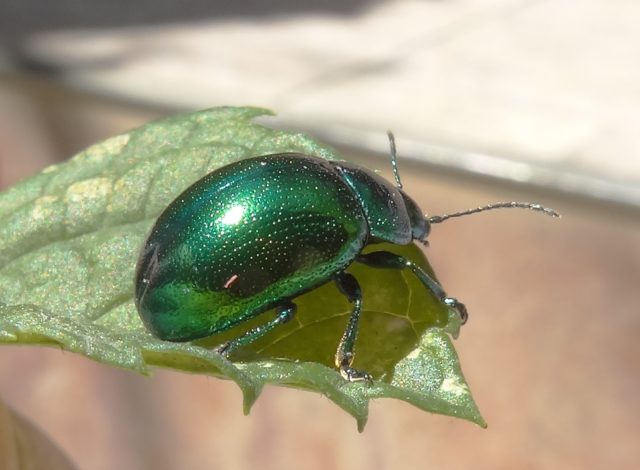Content
Shandra ordinary takes its name from the ancient Indian "Sandras", which means "brilliant". In the common people it is customary to call it Horsemint or Shanta, Swamp Bylitsa.
Description of the common shandra
Most varieties of Horsemint are perennials, reaching a height of 70 cm. Its stem is tetrahedral, or branched or simple, with whitish-tomentose pubescence in the lower part.
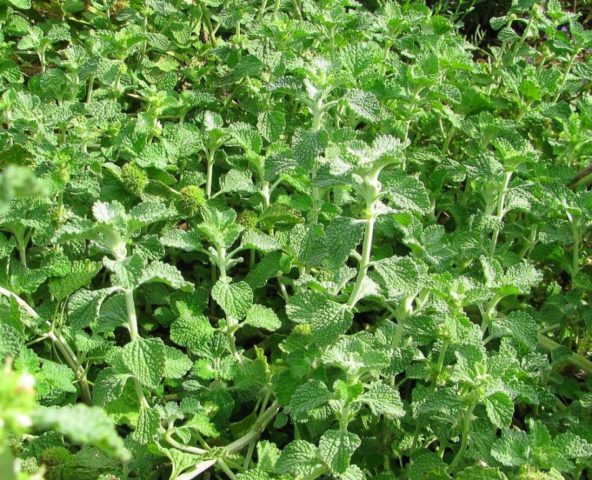
Shandra ordinary is a very unpretentious plant, it can be found under the cliffs, in quarries and on the borders
The leaf plates of Shandra vulgaris at the bottom and on the stem have long petioles and a round-ovoid shape. They reach 3.5 cm in length, their surface is wrinkled.
The leaf plates at the tops are small in size with short petioles. From above they have a pale green color and wrinkles, on the underside they have a grayish tint.
The fruit of the Shandra grass is an egg-shaped nutlet, yellow-brown in color with spotting and small tubercles. They are also found in an oblong or rounded shape. Ripening period from July to September.
The flowers of the plant are small, located in the axils of the leaf plates and collected in false whorls. In Shandra, the bracts are subulate. A tube-shaped cup with 5-10 awl-shaped teeth.
Shandra's corolla is tubular, short-haired, white. The upper lip is erect, almost flat. The lower one is either equal to it, or somewhat shorter, two-incised.
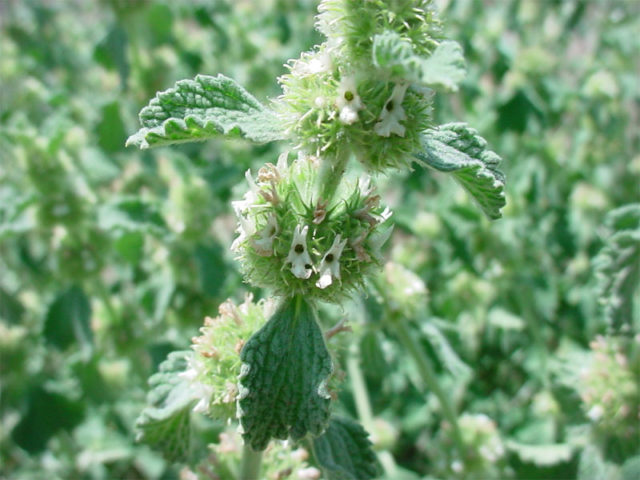
The flowers of the Shandra vulgaris are bisexual
Horse mint is widespread in the Crimea and on the territory of Ukraine. In Russia, Shandra is found in the Baltic, Lower Don and Black Sea regions. The grass grows in the Caucasus and Central Asia. Shandra vulgaris is ubiquitous in Europe and in the west of China, in North Africa.
Types and varieties
There are several varieties of the plant. Shandra foreign is widespread in Turkey and in the southern part of Central Europe in the lowlands and hills, on the ruins. The plant prefers sands and depleted soils.
Outwardly, Shandra foreign is a plant with an erect stem 30-80 cm high. The leaf plates are rhomboid-oblong, with a solid edge at the base. At the tops of the plant, they are smaller, lanceolate, wrinkled.
In the leaf axils there are asymmetrical whorls with inflorescences. The flower cup is soft, in the form of a cone with five teeth. It is small in size, white in color with a pleasant aroma. Nuts with small tubercles, dark brown color.
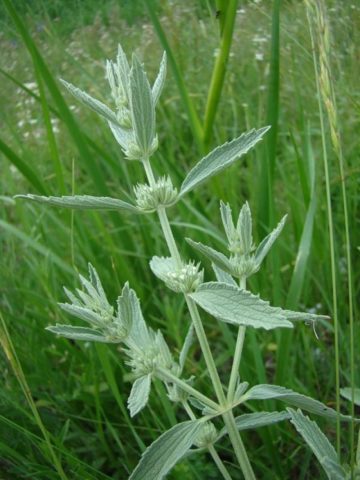
The seeds of foreign chandra contain oils and acids: palmitic, oleic, linolenic and stearic
Early Shandra is characterized as hypocotyl with dense pubescence. The cotyledons are practically round, reaching 4-5 mm in length. On hairy petioles, they are 8-10 mm.
The leaf plates of the plant have an ovoid-elongated shape, 6-7 mm long, with dense pubescence.
The inflorescence of early shandra is in the form of a calyx, with teeth located along the edges.The corolla is larger than that of the foreign shandra.
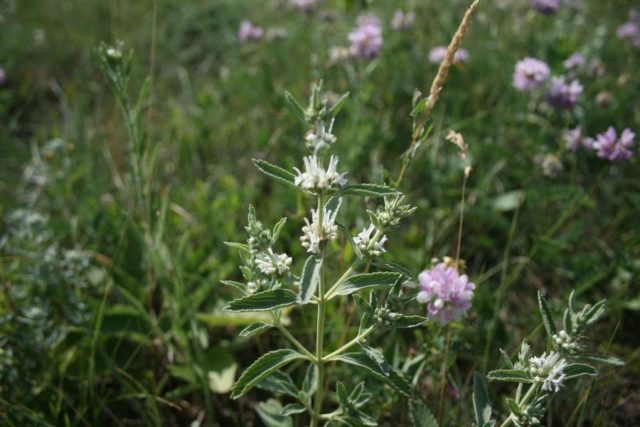
Shandra early is widespread in Europe and the Caucasus (in the eastern part)
Shandra fragrant is a perennial plant that easily spreads through the territory by self-sowing. The shrub reaches a height of 60-100 cm, has pubescent, slightly elongated leaves with pointed tips. When rubbed, the leaf plates begin to emit a pleasant aroma. Paniculate inflorescences, occurring from white to lilac.
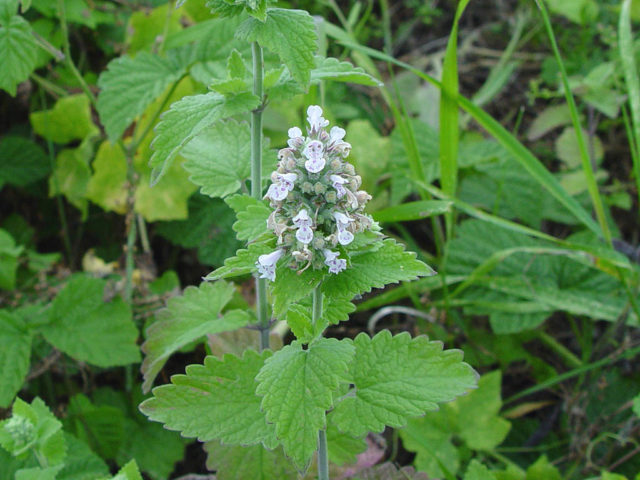
This variety is very attractive to cats for its aroma and taste.
The water shandra, in contrast to the common one, has a slightly pubescent stem of a simple or four-sided furrowed shape with a thick root. The leaf plates are openwork, outwardly similar to nettle. The flowers of the variety are small, funnel-shaped, attractive to insects.
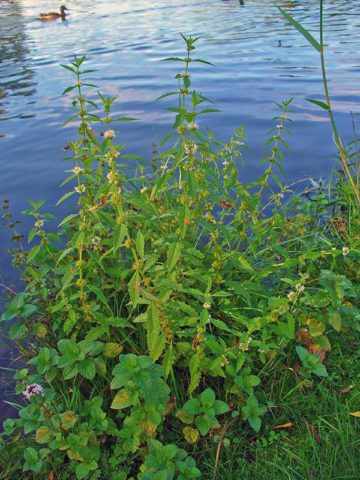
The water shandra, unlike the common one, is a plant that prefers water bodies.
The variety can be used for landscaping.
Breeding features
The main cultivation method is planting seeds. For Shandra vulgaris, self-sowing is characteristic: it is worth planting for one year, the next summer the grass will grow on its own in the same place.
Reproduction is also possible by cuttings, which are harvested in the summer. This method is difficult.
The healing properties of shandra herb
Shandra vulgaris refers to medicinal plants with a number of properties:
- removal of inflammation;
- astringent effect;
- antiarrhythmic and antispasmodic properties;
- decrease in pressure.
The substances that make up Shandra vulgaris contribute to the normalization of the heart rate, stimulate the work of the gallbladder.
With regular use of the herb, the volume of secreted gastric juice increases, which can be used in the treatment of gastritis and decreased appetite, liver pathologies.
In the composition of Shandra vulgaris, there is marrubiin, which contributes to the liquefaction and expectoration of phlegm in case of lung disease.
It is possible to use the herb to combat fever, skin rashes, hemorrhoids.
Application of shandra
In traditional medicine, Shandra vulgaris is rarely used. But it is actively used in folk recipes, collecting and drying in advance.

It is possible to purchase Horsemint in pharmacies, where it is available in crushed form
In folk medicine
Considering the medicinal properties and contraindications to the use of Shandra vulgaris, the herb is used for various diseases.
With jaundice, inflammatory processes in the stomach and intestines, menstrual irregularities, prepare the following infusion: 2 tsp. chopped ordinary shandra is poured with 250 ml of cold water and insisted for 3 to 4 hours. The resulting medication should be divided into 4 doses.
Useful for the body and taking fresh juice 3-4 times a day. Honey is added to it before use.
To combat senile asthma 2 tsp. raw materials are poured with 500 ml of cooled boiled water and left for 4 hours, having previously closed the container. Divide the infusion into 50 ml portions, sweeten with honey before use.
When the body is depleted, the following infusion of Shandra ordinary helps: 2 tsp. crushed plants are poured with 200 ml of boiling water and insisted in a closed container for 2 hours. After the strained medicine should be consumed in 1 tbsp. l. 20 minutes before the main meal.
With gastrocardial syndrome, the following mixture helps: shandra, thyme and centaury mix 30 g each. Add 2 tsp in 200 ml of boiling water. the resulting mixture and leave for 5 minutes. A day should be consumed from 200 to 400 ml of infusion. You should not prepare the medicine in advance: the maximum effect is observed when it is taken fresh.
In cosmetology
The drug is used in this industry, adding to the following cosmetic products:
- creams and ointments intended for sensitive skin, to protect the epidermis from external factors, as a soothing agent for the skin;
- wound healing preparations.
Common Shandra is also found in health products as one of the components.
Limitations and contraindications
Before using Shandra ordinary herb, you should familiarize yourself with the contraindications. It is not recommended to take infusions and decoctions for people with exacerbated gastrointestinal diseases, ulcers and pancreatitis.
It is forbidden to give a medicine based on a plant to children and women who are carrying a baby or nursing.
Landing rules
Shandra vulgaris is distinguished by its rare unpretentiousness in planting and care. It grows successfully on marginal soil, in a shaded or sunny place.
To plant Shandra officinalis, it is necessary to prepare containers filled with loose soil in March. Seeds are placed in it to a depth of 1 cm, then they are well moistened and covered with glass until sprouts appear. The main care for Shandra vulgaris is watering when it dries up in a soil container.
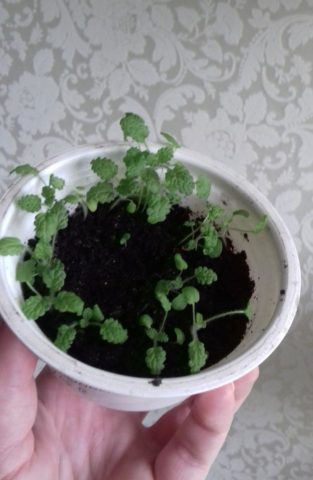
The seating of horse mint is demanding on the sun's rays, so you should place containers on the windowsill
Landing on the site is carried out in the last week of May. The plant is placed in the beds while maintaining a distance of 25-35 cm between them.
Growing features
Fertilizing the plant is not required. The main care is removing weeds, loosening the soil and watering as the soil dries.
Shandra vulgaris is not afraid of frost, so the plant is not covered for the winter. It is enough to cut the stems and remove the weeds before the snow falls.
Pests and diseases
The main pest of Shandra vulgaris is the mint leaf beetle. The beetle, 7-10 mm in size, lays the larvae on the plant and damages the leaf plates.
To destroy it, it is enough to treat the plant with infusion of bitter pepper or chamomile. The Actellic insecticide is effective against it.
The fight against the mint leaf beetle should be stopped 40 days before the collection of horse mint, so that the preparations do not affect the quality of the harvested raw materials.
When and how to collect Shandra for medicinal purposes
If it is impossible to purchase funds in a pharmacy, it is possible to independently procure raw materials. Shandra vulgaris should be collected during its flowering period: the tops of the stems are cut off.
How to dry Shandra properly
The collected grass is fastened in bunches and suspended in a shaded place in a suspended state. The use of a dryer is allowed. The device should be set at 45 ° C.
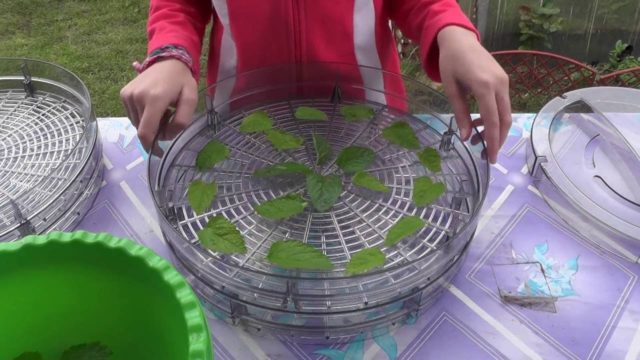
Shandra ordinary should not be laid out on the pallet of the dryer in a thick layer: it will dry unevenly
After drying, when the sheet plates become brittle and break easily, they are poured into cloth bags or paper bags.
Conclusion
Shandra vulgaris is a plant that is distinguished by its rare unpretentiousness and is ubiquitous. Its stems and leaf plates are used in cosmetology and folk recipes. Shandra ordinary can be grown and prepared independently, or purchased at a pharmacy.
